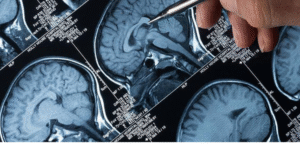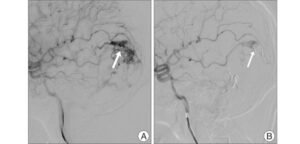Brain Aneurysm Surgery in Delhi
A sudden severe headache, blurred vision, or even fainting can be terrifying signs of a brain aneurysm. For many patients, life changes in an instant. But with today’s advanced brain aneurysm treatment in India, there is real hope for recovery.
Brain aneurysm treatment in India today is safer, more precise, and highly effective due to advanced therapies. With early detection and the proper care, you can not only survive but also return to leading fulfilling, independent lives.
Dr. Vikas Gupta, an experienced Brain Aneurysm Surgeon in Delhi, has spent over two decades helping patients through some of the most critical moments of their lives. Known as one of the best brain aneurysm surgeons in Delhi, he combines world-class surgical skills with compassion, guiding patients and families with care and confidence at every step.
If you or your loved one has been advised to undergo brain aneurysm surgery in Delhi, remember, the right treatment, at the right time, can save lives and open the door to recovery.
About Brain Aneurysm
A brain aneurysm is a bulging, weak spot in a blood vessel in the brain that can leak or rupture, causing life-threatening bleeding.
- Globally, around 3–5% of people may develop brain aneurysms.
- When untreated, rupture can lead to stroke, brain damage, or death.
- Early treatment can prevent rupture and improve survival outcomes.
Several factors increase the risk of developing a Brain aneurysm. The most common brain aneurysms are:
- High blood pressure
- Smoking
- Family history of aneurysm
- Head injury
- Connective tissue disorders
Brain Aneurysm Early Symptoms You Shouldn’t Ignore
- Severe, sudden headache (often described as “the worst headache of my life”)
- Blurred or double vision
- Nausea and vomiting
- Neck stiffness
- Loss of consciousness in severe cases
Recognising early symptoms of a brain aneurysm is crucial for timely treatment and survival.
Types of Brain Aneurysm Surgeries
Dr. Vikas Gupta offers a full range of advanced surgical procedures for brain aneurysm treatment in Delhi, including:
- Microsurgical Clipping – A clip is placed at the neck of the aneurysm to stop blood flow.
- Endovascular Coiling – A minimally invasive procedure using catheters to fill the aneurysm with coils.
- Flow Diversion Stent Treatment – Redirects blood flow away from the aneurysm to prevent it from rupturing.
- Bypass Surgery – Used in rare, complex cases when other methods are unsuitable.
As one of the top Brain Aneurysm Specialists in Delhi, Dr. Gupta ensures a tailored approach that is safest for each patient’s condition.
Who Should Consider Brain Aneurysm Surgery?
Surgery is advised if you have:
- A ruptured aneurysm (emergency condition)
- An unruptured aneurysm at risk of rupture
- Family history of aneurysms or genetic predisposition
- Symptoms like sudden headache, vision problems, or seizures
Early treatment can significantly improve the brain aneurysm survival rate.
Cost of Brain Aneurysm Surgery in Delhi
The cost of brain aneurysm surgery in Delhi depends on the type of procedure and the hospital.
- Endovascular coiling / clipping: ₹3,50,000 – ₹6,00,000 ($4,200 – $7,200)
- Flow diversion stent treatment: ₹7,00,000 – ₹12,00,000 ($8,500 – $14,500)
Delhi offers affordable brain aneurysm surgery compared to Western countries while ensuring international standards of care.
Factors Affecting Brain Aneurysm Surgery Cost
- Type of procedure – clipping, coiling, or stent placement.
- Stage and severity – ruptured aneurysms may need urgent and intensive care.
- Surgeon’s expertise – highly experienced neurosurgeons may charge higher fees.
- Hospital facilities – JCI/NABH-accredited hospitals have advanced ICUs and neuro labs.
- Additional tests – including angiography, MRI, CT scans, and post-surgery monitoring, add to the costs.
Recovery & Rehabilitation for Brain Aneurysm Surgery
- Hospital Stay: 5–10 days, depending on procedure and complexity.
- Initial Recovery:
- Coiling: 1–2 weeks
- Clipping: 4–6 weeks
- Stent: 3–4 weeks
- Full Recovery: 2–3 months, including follow-ups and rehabilitation.
- Lifestyle advice: Control blood pressure, quit smoking, eat a balanced diet, and schedule regular check-ups.
With timely brain aneurysm treatment in Delhi, survival rates exceed 85–90%, and most patients return to independent, normal lives within months.
Why Choose Dr. Vikas Gupta for Brain Aneurysm Surgery in Delhi?
- Recognised as one of the best Brain Aneurysm Surgeons in Delhi
- 20+ years of experience in complex neurosurgeries
- Expertise in minimally invasive and advanced endovascular techniques
- High success rate with improved quality of life for patients
- Patient-centric, compassionate approach
- Access to world-class neuro facilities in Delhi
Related Blogs & Videos

From Diagnosis to Treatment: What Role Does Neuro-Oncology Play in Enhancing Patient Outcomes?
According to the World Health Organization (WHO), primary brain tumors account for approximately 2% of…
Read Article →
Is Tumor Embolization a Major Surgery?
Tumor embolization, designed to cut off blood supply to tumors delicately, stands out for its…
Read Article →